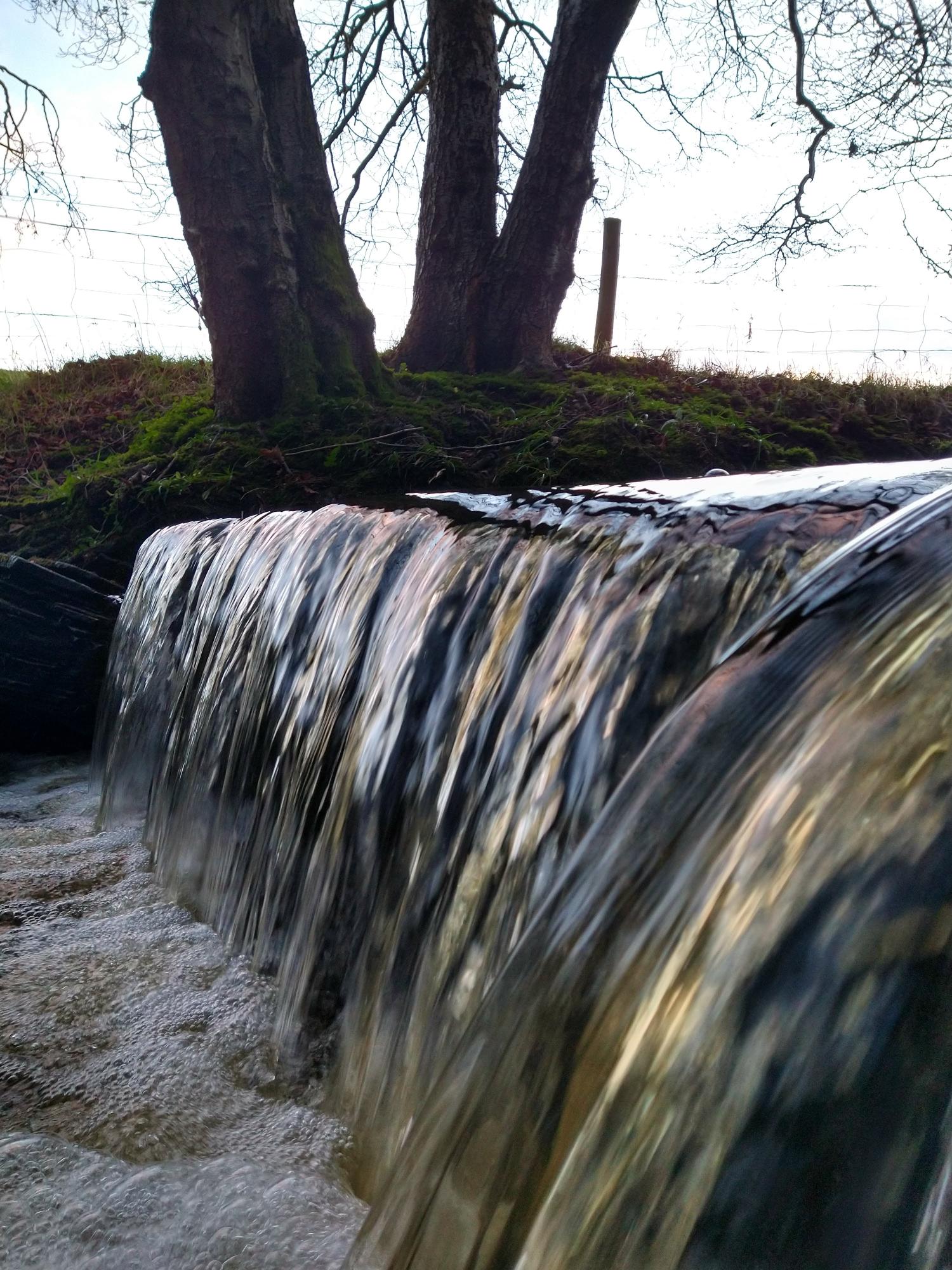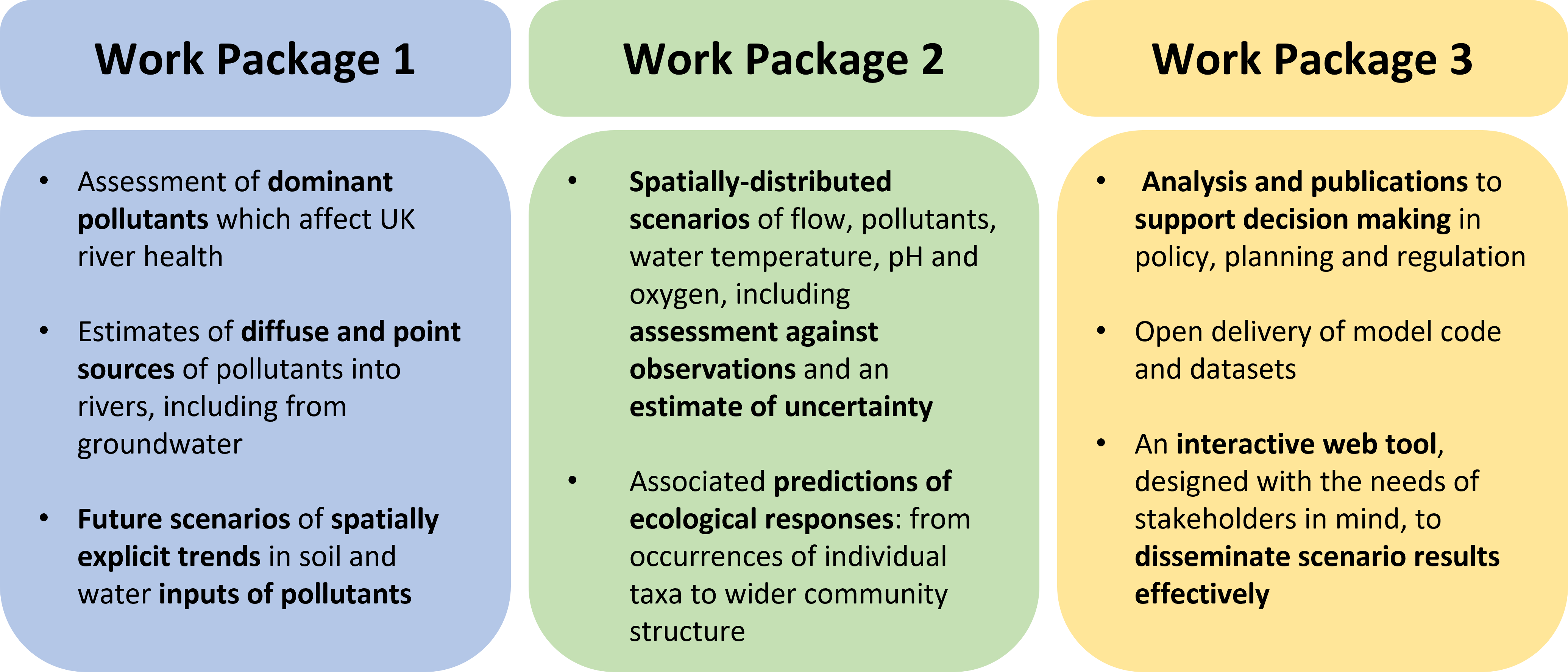The LTLS-FE project is divided into 3 work packages:
- WP1 - Contaminant inputs and scenario development
- WP2 - Integrated model of freshwater and biodiversity impacts
- WP3 - Information to support adaption and mitigation
See below for a detailed breakdown of each work package:

